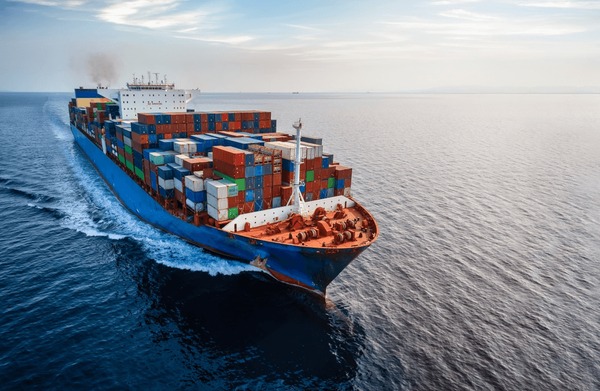- By TOP CHINA FREIGHT
- September 22, 2025
- Sea Freight, Shipping
Table of Contents
Sea freight from China to India is a cost-effective option for shipping bulk goods like electronics, machinery, and textiles. Major ports such as Shanghai and Shenzhen connect directly to Mumbai, Chennai, and Kolkata. It supports FCL, LCL, and refrigerated shipments, offering reliable transit times and flexible logistics.

What Factors Affect Sea Freight from China to India?
Several variables influence the cost and efficiency of shipping by sea:
- Cargo volume and weight: Larger shipments benefit from FCL pricing, while smaller loads are ideal for LCL.
- Port selection: Transit times differ depending on departure and destination ports.
- Seasonality: Peak periods like Chinese New Year or Indian festive seasons can increase shipping rates.
- Shipping line availability:Direct services are faster but may be costlier than transshipment options.
- Additional services: Insurance, customs clearance, and warehousing affect overall cost.
Transitioning from planning to execution, understanding these factors helps importers optimize budgets while maintaining predictable delivery schedules.
How Long Does Sea Freight from China to India Take?
Transit times vary based on origin, destination, and shipping service:
| Departure Port | Destination Port | Transit Time (Days) |
|---|---|---|
| Shanghai | Mumbai | 18–22 |
| Shenzhen | Chennai | 16–20 |
| Ningbo | Kolkata | 20–24 |
| Guangzhou | Nhava Sheva | 17–21 |
Full container shipments usually follow scheduled departures, while LCL may require consolidation, slightly extending transit times. Choosing a reliable freight forwarder can help maintain schedule consistency and minimize delays.
What Are the Main Costs Involved?
Sea freight costs include several components:
| Cost Type | Description |
|---|---|
| Ocean freight | Base rate charged per container or per cubic meter for LCL |
| Bunker adjustment factor | Fuel surcharge, fluctuates with market prices |
| Terminal handling charges | Loading/unloading at origin and destination ports |
| Documentation fees | Bills of lading, customs documents |
| Customs duties & taxes | Calculated based on Indian import regulations |
| Optional insurance | Protection against cargo damage or loss |
Understanding each component allows importers to budget accurately and compare quotations efficiently.
FCL vs LCL: Which Should You Choose?
Full Container Load (FCL):
- Entire container dedicated to one shipper.
- Faster transit and lower risk of damage.
- Cost-effective for large shipments exceeding 15–20 cubic meters.
Less-than-Container Load (LCL):
- Multiple shippers share a single container.
- More flexible for small shipments.
- Slightly longer transit due to consolidation processes.
Choosing the right option depends on cargo size, budget, and urgency.
How to Prepare Your Shipment for Sea Freight
Bill of Lading, Commercial Invoice, Packing List, Certificate of Origin.
Ensure goods are packed securely and marked according to Indian import standards.
Verify Harmonized System (HS) codes and duty rates.
Protect high-value shipments from loss or damage.
Tips to Reduce Sea Freight Costs from China to India
1.Consolidate shipments:
Combine smaller shipments into one container.
2.Negotiate with multiple carriers:
Obtain competitive quotes.
3.Book in advance:
Avoid peak season surcharges.
4.Optimize packaging:
Reduce volumetric space and weight to lower LCL costs.
5.Use a trusted freight forwarder:
Access better rates and smoother customs clearance.
Case Study: Electronics Import from Shenzhen to Mumbai

A medium-sized electronics company imports 2 FCLs per month from Shenzhen to Mumbai. By leveraging a reliable freight forwarder:
- Transit time was reduced from 25 to 19 days.
- Costs per container dropped by 12% due to bulk negotiation.
- Real-time tracking provided shipment visibility at all stages.
This demonstrates how strategic planning and professional support optimize sea freight operations.
Pros and Cons of Sea Freight Compared to Air
| Shipping Mode | Pros | Cons |
|---|---|---|
| Sea Freight | Cost-effective, handles large volumes, environmentally friendly | Longer transit, requires proper planning |
| Air Freight | Fast transit, ideal for urgent or high-value goods | Expensive, limited capacity |
Sea freight remains ideal for businesses prioritizing cost-efficiency and bulk transport.
Key Ports for Sea Freight from China to India
- China: Shanghai, Shenzhen, Ningbo, Guangzhou
- India: Mumbai (Nhava Sheva), Chennai, Kolkata, Tuticorin
Selecting the right port impacts transit time, shipping cost, and inland logistics efficiency.
Conclusion
Shipping goods via sea freight from China to India offers a cost-effective and flexible solution for importers. By understanding transit times, costs, container options, and port logistics, businesses can plan shipments more efficiently. Combining careful preparation with professional freight forwarding support ensures timely delivery and reduced risk, making sea freight the preferred choice for large-scale imports.
Need a Shipping Quote?
If you want expert guidance and peace of mind, our team is ready to assist.
TJ China Freight offers tailored solutions to help businesses of all sizes ship more reliably from China.

FAQ
Q1:How long does sea freight from China to India take?
Transit times range from 16 to 24 days depending on ports and service type. FCL shipments are usually faster than LCL.
Q2:Which is cheaper, FCL or LCL?
FCL is more cost-effective for large shipments, while LCL suits smaller volumes with flexible scheduling.
Q3:What documentation is needed?
Required documents include Bill of Lading, Commercial Invoice, Packing List, and Certificate of Origin.
Q4:Can I insure my shipment?
Yes, marine insurance protects goods against loss, damage, or theft during transit.
Q5:Are there seasonal surcharges?
Yes, peak seasons like Chinese New Year and Indian festivals can increase costs.
